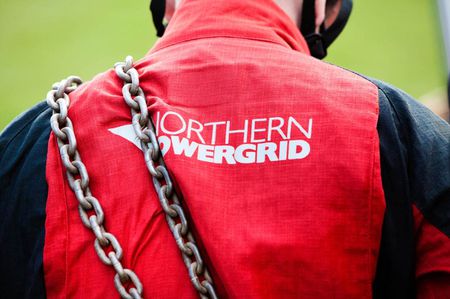
Northern Powergrid has announced plans to put its eight million customers at the heart of the smart grid, creating a new energy market where they can make money from solar panels, electric vehicles and home batteries.
It will draw up recommendations as part of a unique, three-year project – the Customer-Led Distribution System - to identify the best use of technologies in a future smart energy system and the business models and policies necessary to support them.
The company, which distributes electricity to 3.9 million homes in the North East, Yorkshire and northern Lincolnshire, made the announcement as it set out its plans to ensure that customers gain maximum benefits from low-carbon technologies transforming the energy network.
Patrick Erwin, Policy and Markets Director at Northern Powergrid, said: “The transition to a reliable, cost-effective, low-carbon network offers huge opportunities for the economic prosperity of our region. We want to build this smart grid around the needs of our customers, delivering them the best service at the lowest possible cost.
“We want to support emerging energy markets where our customers can buy the services they need as cheaply as possible, and where they can sell services from solar panels, electric vehicles and home batteries that will help balance demand on the network and make it more efficient. Importantly, we also need to ensure the future system does not unfairly impact vulnerable customers.”
He was speaking to an audience of customers and energy industry figures in London at the first of a series of consultation events, Unlocking a Smart Energy Future, where Northern Powergrid is outlining its plans to seize the opportunities of this transition and evolve into a Distribution System Operator actively managing the network.
The energy system is in the midst of unprecedented change. Increasing amounts of electricity are being produced by solar panels, wind farms and other local forms of generation. New ways to manage supply and demand are going mainstream, such as battery storage and paying big energy users to reduce consumption at peak times. Homes are becoming mini-power stations generating and storing electricity with solar panels, home batteries and electric vehicles.
This transition presents major opportunities:
- Cutting costs by managing local energy resources to create an efficient, flexible system balancing supply and demand, for example by shifting peak consumption to avoid expensive network upgrades.
- Accelerating the transition to a low-carbon energy system by developing smart services and infrastructure to support large volumes of clean renewable power.
- Delivering reliable, low-cost services to customers and rewarding them for supporting the system by creating a market for energy services.
Dr Erwin said: “As the network operator responsible and accountable for maintaining a safe, stable and reliable network and delivering electricity to eight million people, we believe we are best placed to seize the opportunities of this energy transition for our customers and ensure we continue to deliver them the best services at the lowest possible cost.
“We don’t have all the answers and we want the flexibility to be able to seize new opportunities, so we are collaborating within the industry to share best practice and consulting widely with customers and experts to flesh out our plans to ensure we take the right decisions.”
Unique project will model future smart energy system
The £1.9 million Customer-Led Distribution System project is the first to take a holistic view of how to maximise the benefits of a future smart energy system, identifying how to accommodate large volumes of new technologies, such as local generation and electric vehicles, at least cost while at the same time enabling customers to earn income by selling energy or services to balance the network.
Researchers at the University of Bath and Newcastle University will develop models and laboratory demonstrations of distributed energy systems, local energy markets and network operations, tracking flows of energy, payments and information. This virtual system will enable them to explore different approaches, using data from real networks, and will also allow them to develop strategies that may be used to coordinate network and market operations.
Customers and stakeholders will be kept closely involved on the work. A new expert advisory group with a wide range of perspectives will oversee this work and help refine it into practical reports to help the industry adapt to new roles and inform government policy. Early thinking on industry and market structures will be shared in the first quarter of 2018 with regular updates throughout the project.
Northern Powergrid is already taking steps to gain hands-on experience of new technologies. It is exploring how to use home batteries to relieve pressures on the network caused by solar panels, in a trial in 40 homes near Barnsley with smart battery pioneer Moixa. It is expected to halve residents’ energy bills, enable more solar power to be installed without upgrading the local network, and save millions in the cost of running the UK’s electricity system.
Linked to system operation, it is also launching a consultation on plans to manage power losses which cost its customers around £100 million a year. Much of these occur as electricity is converted to heat as it flows through the network, and the company is exploring technical solutions, such as increasing the size of cables and reducing voltages, and market-based approaches. Also, making sure that losses are seen as part of an optimised whole energy system.


